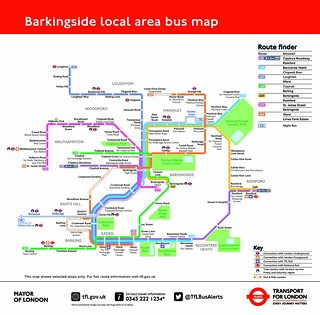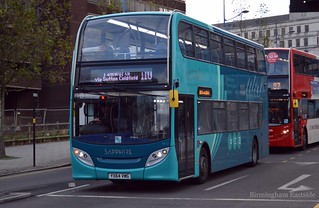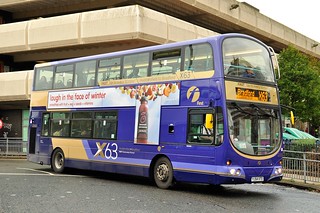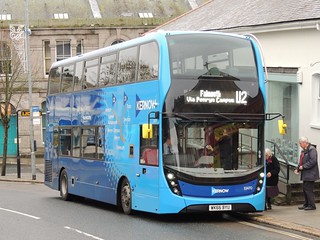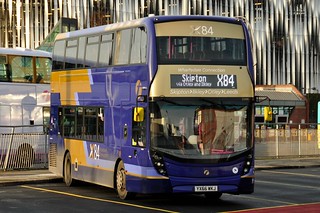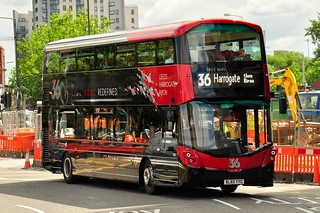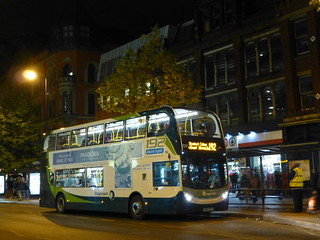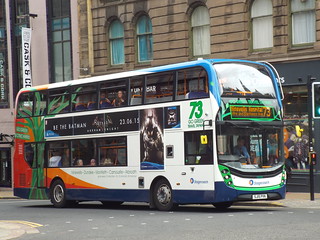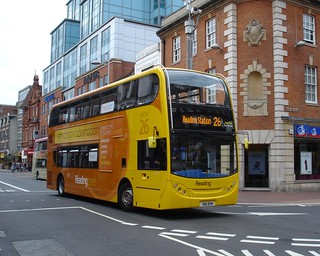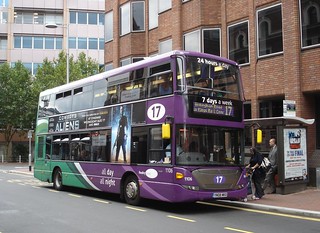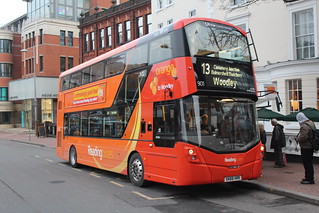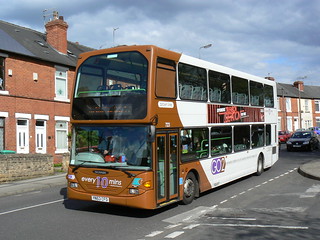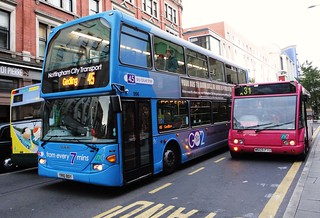From GLA Press release
Mayor trials new Tube-style colour approach to simplify bus network
- Routes given their own distinct colours to make travelling on the bus as easy as taking the Tube
- Buses and signs will be clearly labelled with the colours to help passengers navigate local areas
- Innovative new trial begins in east London
The Mayor of London has today set out his ambition of making the capital’s buses as simple to use as the London Underground as he trials the first “Tube-style” approach to bus travel.
Individual routes have been given their own distinct colour and links to other TfL services have been clearly identified in a new approach that will give passengers travel information in a similar way to the Tube.
The buses and stop signs will be marked in their identifiable colours and the main destinations and interchanges will be listed on the side of the buses. This will simplify use of the bus network in local areas as passengers will be able to tell, at a glance, where the bus will go.
A new trial of this innovative approach has begun in east London where more than 60 red buses are being given their own splash of colour to mark seven different routes. The changes aim to simplify journeys for passengers travelling in Barkingside and across the area including journeys to and from Romford, Walthamstow, Ilford, Loughton and Barking.
A further trial is planned for the summer in Hayes, in west London. If successful, the new designs could spread to other parts of the capital.
The trial is one of a number of bold initiatives from the Mayor and TfL to increase bus ridership across the capital. This includes:
- Freezing single fares at £1.50 until 2020, and introducing the Hopper fare to make a second bus journey within an hour free. This will be extended to unlimited bus and tram journeys in an hour from next year.
- Investing £20m per year in bus priority measures. TfL will deliver around 170 schemes, many in outer London, saving passengers time on some of the most congested routes
- Matching bus capacity with demand by reducing the underused services in central London and reallocating them to where they are needed
- Reviewing traffic signal timings at 1,200 junctions and at 200 sites to improve bus speeds. TfL is also taking steps to tackle congestion on London’s roads, including new and improved strategic management, technology and better communication with road users to tackle the problem head-on.
- Making 95 per cent of bus stops accessible to wheelchair users
- Improving customer service on the bus network by giving all 24,500 bus drivers, bus controllers and other operational staff new training in how to assist customers.
- Continuing the transformation of the bus fleet into a low-polluting means of transport with new ‘Low Emission Bus Zones’ introduced, phasing out the worst polluting diesel buses and replacing or modifying all buses to meet the toughest air quality standards by 2020
“We’re constantly looking for new and innovative ways to improve our customers’ journeys. We’ve redesigned the look of Barkingside’s buses and the information we provide to customers. We believe this will make bus travel simpler and will encourage more Londoners and visitors to use buses – the Capital’s most expansive and accessible public transport service, which also offers excellent value for money.”
Notes to editors
- Photos of the Barkingside bus trial are available at https://www.flickr.com/gp/tflpress/TbL165
- The trial will take place in Barkingside and parts of Romford, Claybury, Ilford, Hainault, Barking, Walthamstow, Loughton, Becontree Heath and Gants Hill. It will be on routes 462, 128, 150, 167, 169, 247 and 275.
- The trial is supported by bus operators Stagecoach and Arriva
- The bus network is the best value of public transport in London and, with 95 per cent of households being located within 400 metres of a bus stop, it is also the most far-reaching. Buses also represent very good value for money; a single bus fare is frozen at £1.50 until 2020 and the Hopper fare enables passengers to switch onto another bus for free within an hour.
- London’s bus network is one of the most frequent and extensive in the world. It carries almost 2.4 billion passengers a year – more than all the other bus journeys in England combined – linking homes to jobs, schools, hospitals and leisure, as well as providing an accessible lifeline for many.
- London has the largest accessible bus network in the world. This includes every bus being fitted with the iBus system that provides passengers with audio and visual next stop information. TfL works closely with bus operators to ensure the highest standards of service are upheld and more than 25,000 bus drivers are currently participating in new training to improve the service.
Here are some photos of various route branded buses in Britain.
I should also mention that Nottingham City Transport and Reading Buses (both council owned) brand their own bus routes to a distinctive colour.
Here are some of the photos:
As always, I invite you to follow me on Twitter and Google Plus by searching for @CLondoner92

